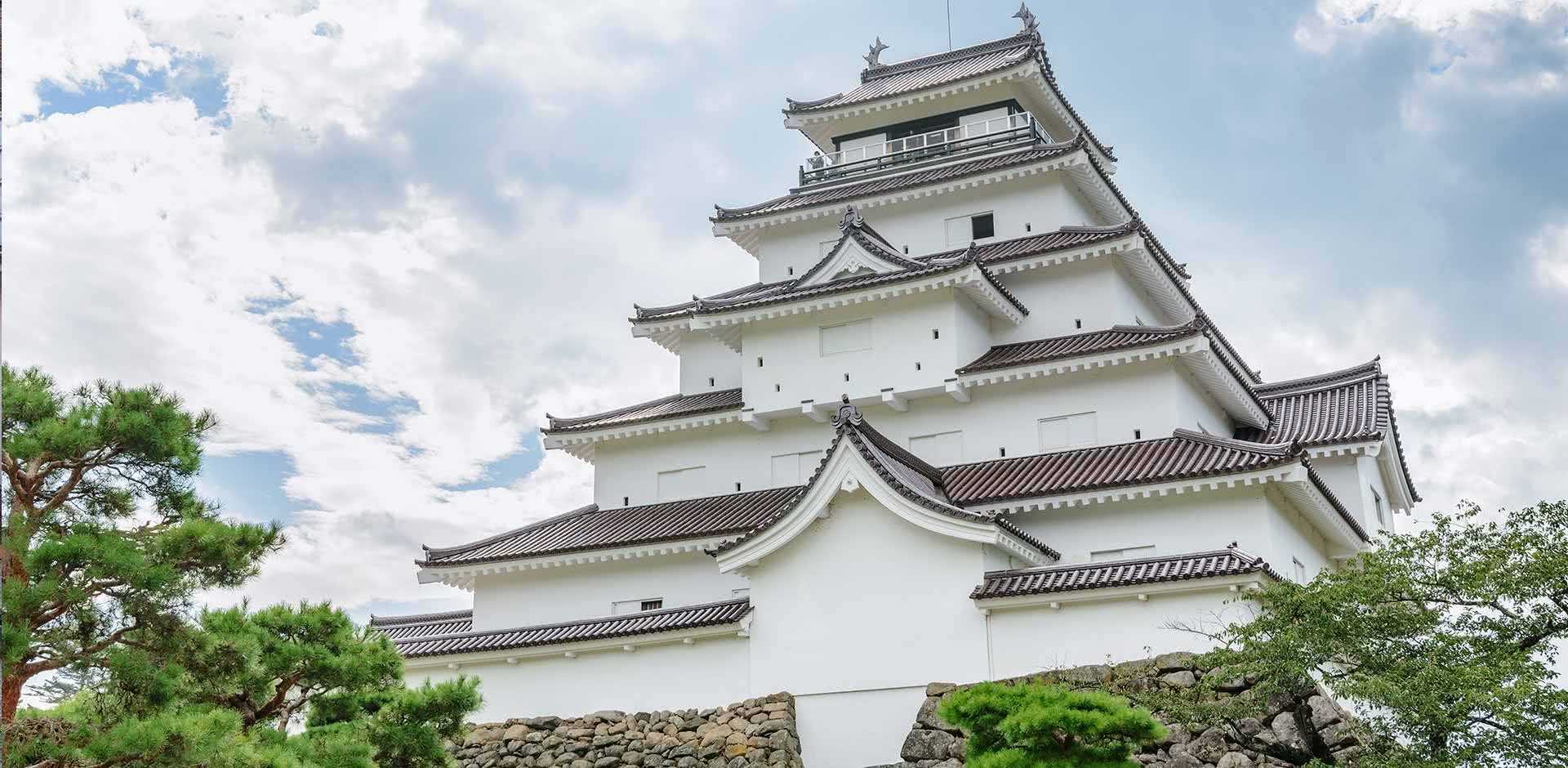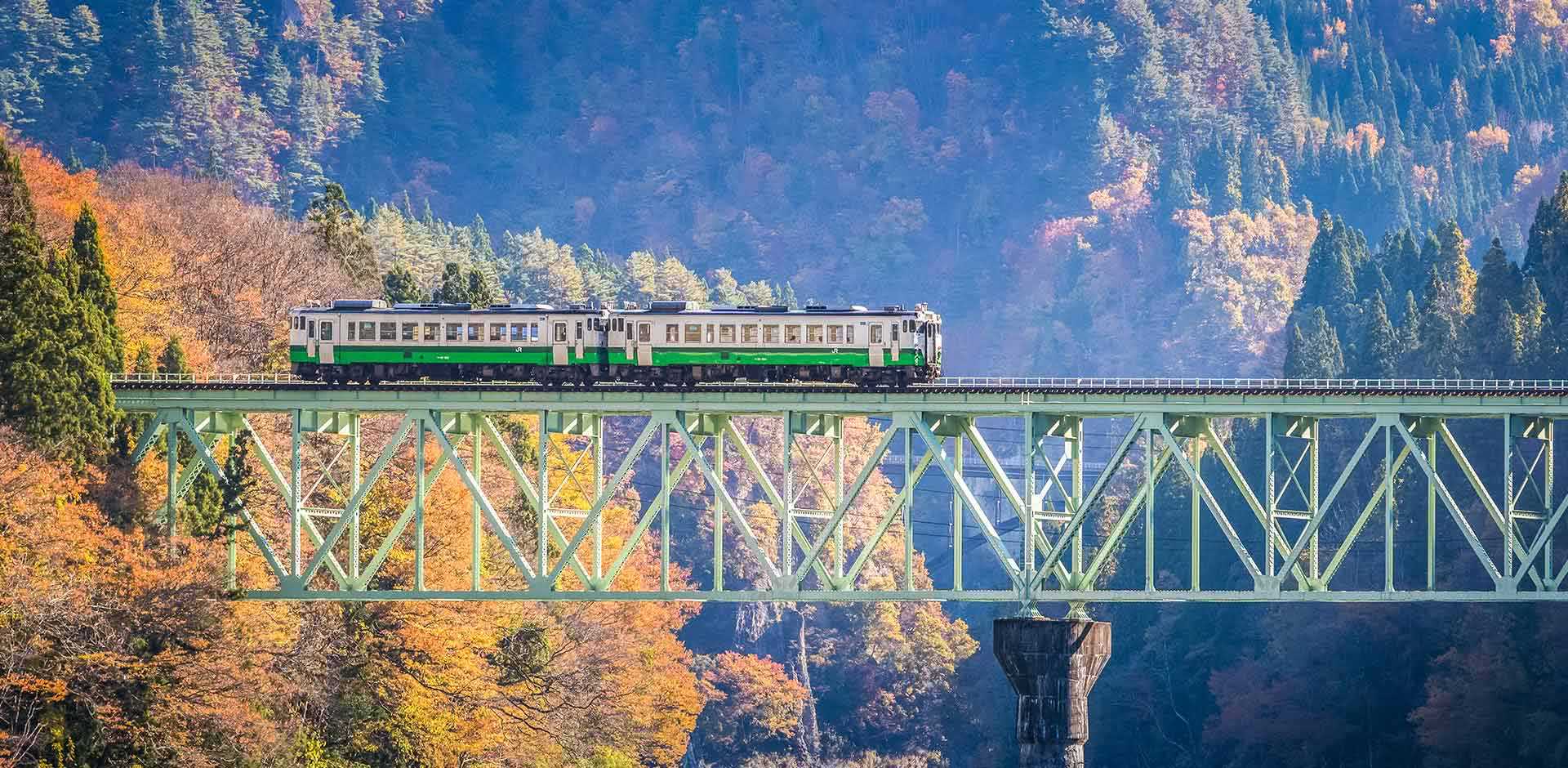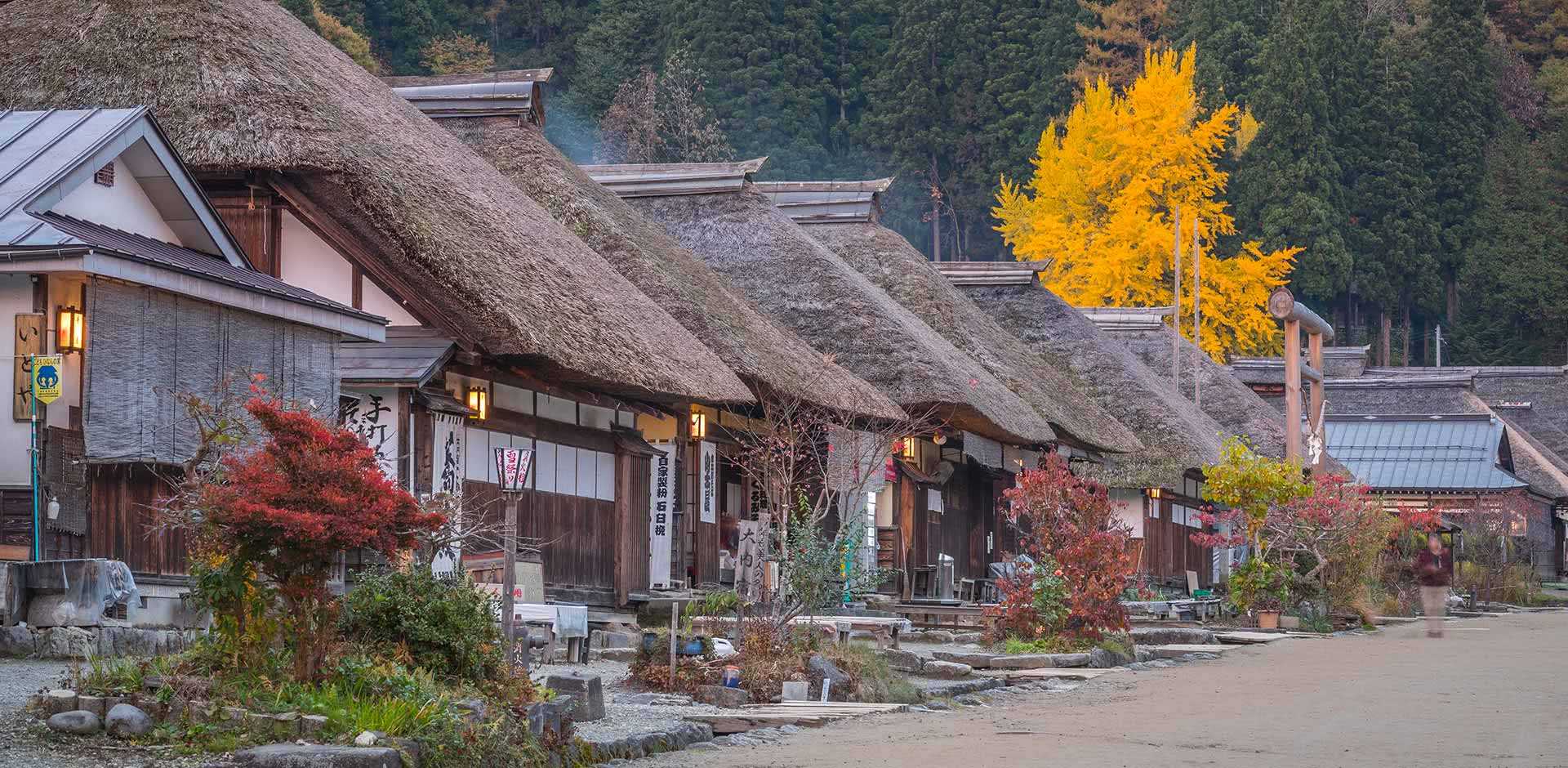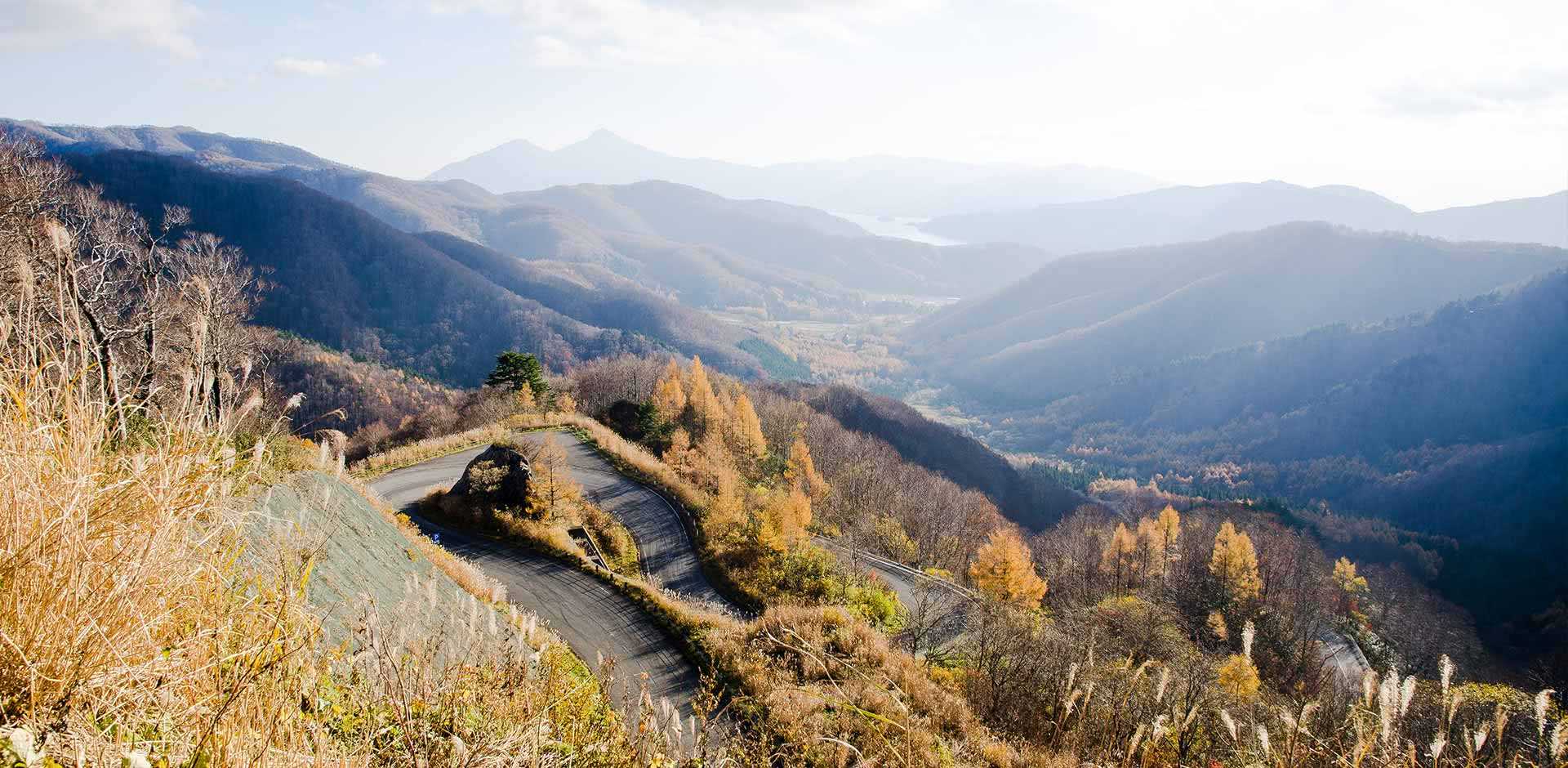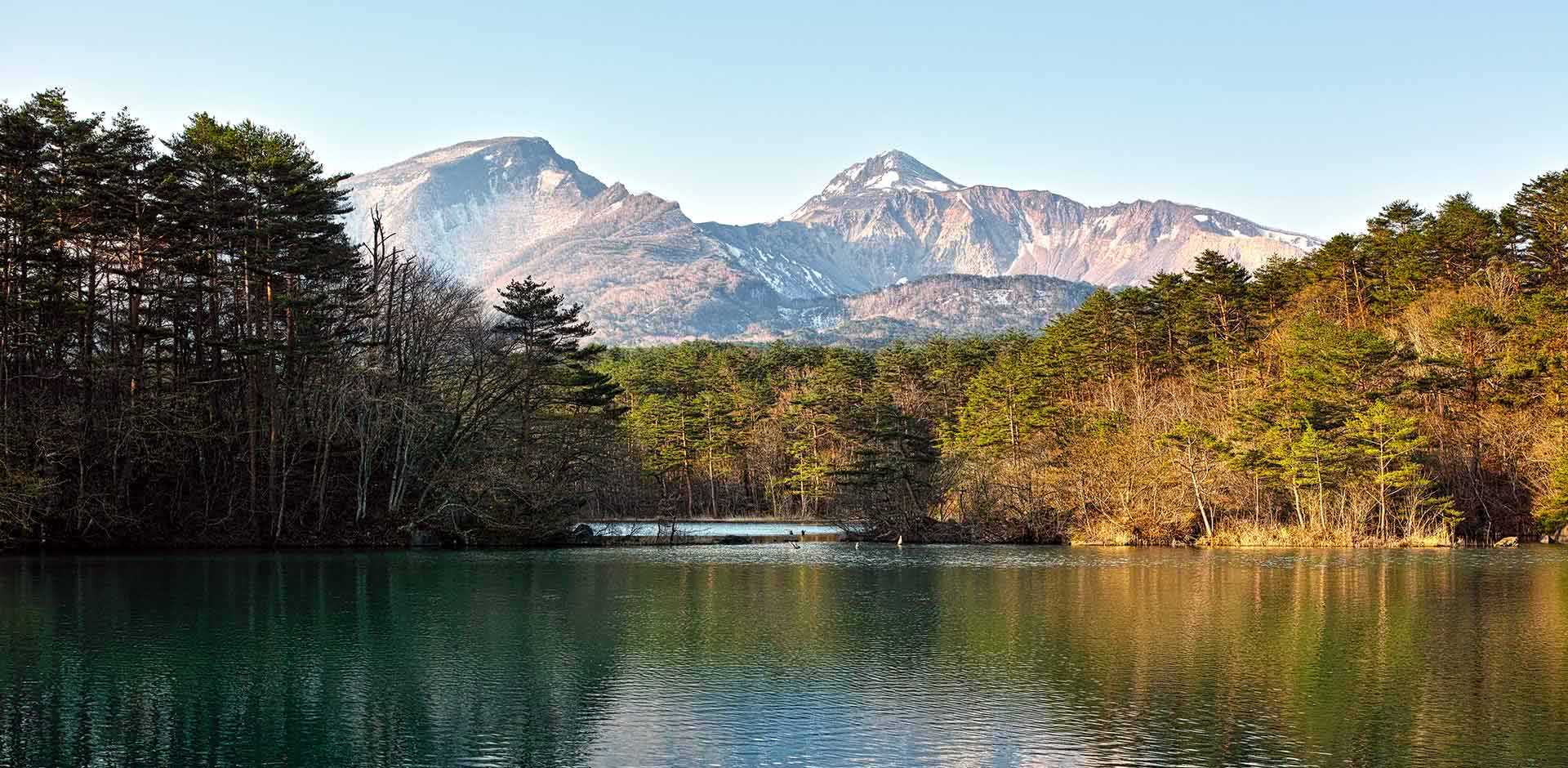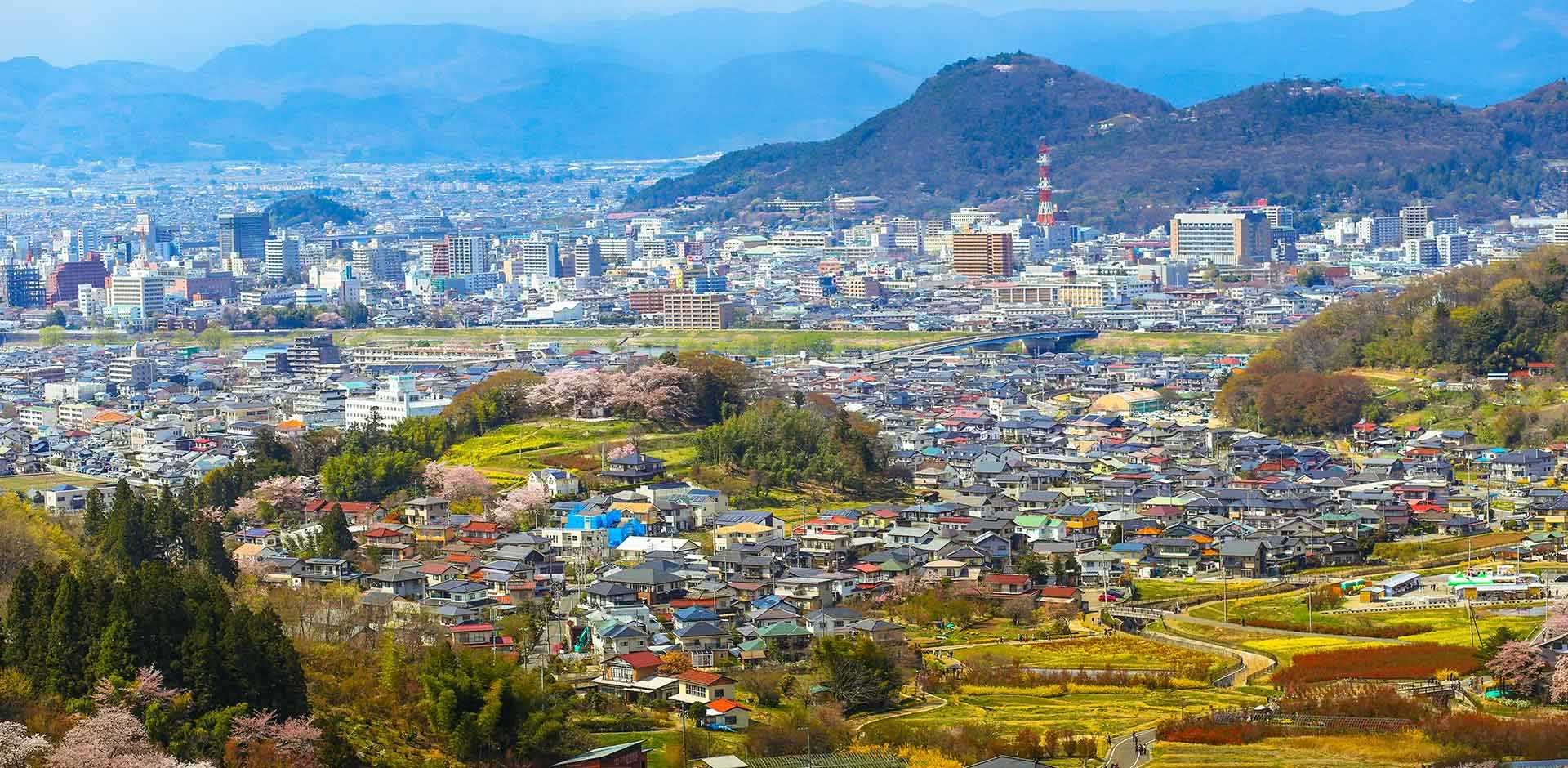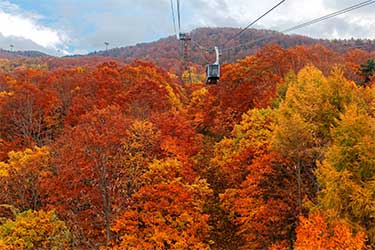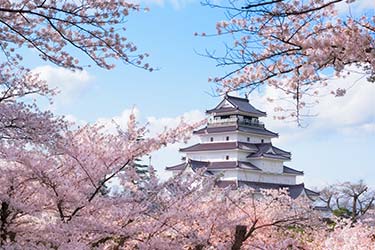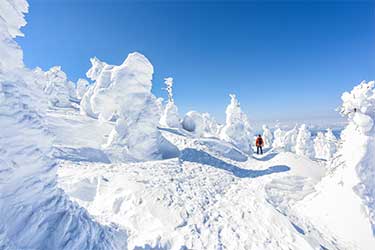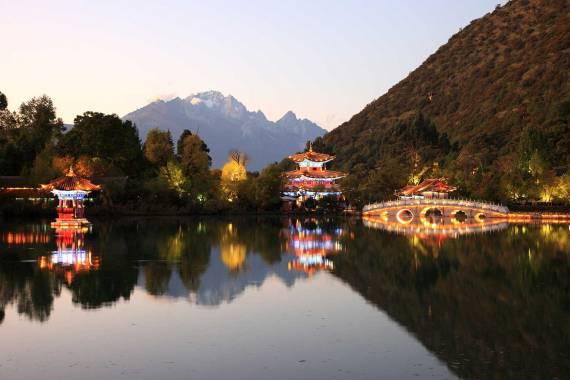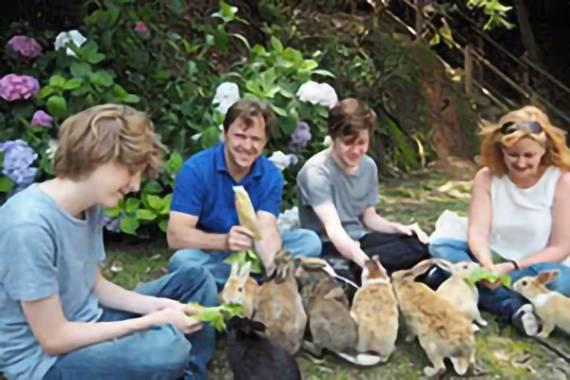Fukushima
Around the 5th Century, the Shirakawa and Nakoso barriers were constructed to divide what is now Fukushima from the south in order to separate "civilized Japan" from the "barbarians to the north." Eventually these fears subsided, but certain regional quirks remained, from talismanic self-righting dolls to a host of distinctive regional dishes, making Fukushima a truly fascinating place for travel. Visitors will get to witness stunning nature, elegant landscape gardens, and beautiful forms of architecture not seen anywhere else in the world. The must-try cuisine includes takato soba, the regional take on soba, a type of thin noodles made from buckwheat flour. After locals saw Prince Masayuki Hoshina eating soba with grated radish on top, the dish spread throughout the region. Kitakata town makes one of the most famous types of noodles in Japan, the eponymous Kitakata ramen.
Spanning 5,321 square miles, Fukushima is the third largest prefecture in Japan and is divided into three mountainous regions: the Aizu, Nakadori, and Hamadori. Arguably one of the best spots for hiking enthusiasts in Fukushima Prefecture is Urabandai, where miles of trails can take you by pristine lakes or to the peaks of towering mountains. To immerse yourselves in the regional culture, consider checking out Aizuwakamatsu, located in the inland Aizu region of the prefecture.
Experiences
A handpicked selection of experiences endorsed by our experts. If you can’t see what you’re looking for, let us know, as our extensive network of local contacts can open many doors.
Aizu Sazaedo Temple
Atop Mount Limoriyama rests the Aizu Sazaedo Temple, home to an original pagoda that was constructed in 1796 entirely from wood. It features a unique double-helix structure that allows you to rise up its three stories and then descend back down while walking in the same direction the entire way. The one-of-a-kind design was conceived to keep visitors from being disturbed by people walking the other way while praying. An on-site architectural diagram of the site looks like an optical illusion, and at the few points where you can peak through at people going the opposite direction, you might just think you’ve fallen into a real-life optical illusion. Remarkably, this temple has undergone no major renovation since it was originally constructed and has accordingly been designated nationally as an Important Cultural Property. Perhaps the main difference is that the original 33 statues of Kannon, the bodhisattva associated with compassion, intended as objects for meditation, have since been lost, but replicas have been placed throughout that you can view as you make your ascent.
Tsuruga Castle
The Tsuruga Castle is located in Aizuwakamatsu, western Fukushima Prefecture. The castle was originally constructed in 1384 and served as the military administrative center of Aizu, the western portion of the prefecture, until 1868 when it was destroyed by the newly formed Imperial Japanese Army in defiance of the Meiji government that sought to end Japan's feudal rule. The castle is one of the last strongholds of samurai loyal to the shogunate, and after it was rebuilt in the 1960s the newly erected castle became a legitimate museum dedicated to the history and culture of Japanese samurai. A distinct characteristic of this castle is that it has red roof tiles as opposed to the grey tiles typically used for Japanese castles. The view from the accessible top floor of the castle extends for miles, affording vistas of the surrounding mountains.
Urabandai (Mt. Bandai)
Urabandai is literally translated as "behind Bandai" and is also called the Bandai Highlands. The stretch of land lies behind the towering, volcanic Mount Bandai and is dotted with ponds, walking paths, and hiking trails. There is also skiing in the winter, and all of these factors have made it an ideal destination for outdoor enthusiasts. The most popular highland walking trail is the Goshikinuma Walk, which takes tourists through the forest and past numerous ponds. Several of the ponds glimmer with unique hues of blue. Other walking trails lead you along the shores of Lake Hibara, the largest lake in the highland area, and past other ponds and marshlands. For the adventurous sort, there is a more challenging path that takes hikers to the summit of Mount Bandai. This path takes roughly eight hours round trip and requires hiking equipment. Urabandai is especially beautiful in the fall when its leaves dramatically change to intense autumnal oranges and yellows. A wide elevation range makes autumnal foliage visible all through the month of October. The region can also be experienced by car, as the surrounding roads allow for unique views of the highlands and the scenic Nakatsugawa Gorge.
Ouchijuku
Ouchijuku is a former post town along the Aizu-Nishi Kaido trade route, which was active during the Edo Period. Restrictions set by the shogun required travelers to make their long journeys on foot and as a result, post towns developed along the routes to provide travelers with food and accommodations. Today, Ouchijuku has been restored to look as it did in the Edo Period. The unpaved main street is lined by thatched roof buildings, which house a variety of shops, restaurants and minshuku (small traditional Japanese inns). Visitors can enjoy a variety of light snacks that have been loved since the Edo period, including scallion buckwheat noodles, char fish grilled in a sunken hearth, and the fragrant and sticky sweet potato rice cakes.
Goshikinuma
Translated into the “Five Colored Marshes,” a group of picturesque lakes and ponds on a highland plain in Bandai-Asahi National Park. They have existed only since 1887, when Mt. Bandai erupted, generating a cascade of displaced earth and rubble that blocked in various places what had been a river, creating ponds and lakes.
Oyakuen Garden
Oyakuen is a landscape garden in Aizuwakamatsu, western Fukushima Prefecture, with a name that can be roughly translated as "Medicinal Herb Garden." With roughly 400 kinds of medicinal herbs and trees cultivated within its confines, the garden lives up to its name. It is an exciting spot for botanists, Japanese culture buffs, and anyone in search of a peaceful experience. The name Oyakuen was assigned to the garden in the 18th Century, but there has actually been a garden in existence on this exact site since the 1380s when a feudal lord made it a garden for his villa that he believed to be a sacred place. With time, the cultivation of medicinal herbs was added, but not an ounce of beauty was sacrificed for this endeavor; today, its idyllic landscape is perfect for wistful walks around the premises of 1.7 hectares.
Japan Regions
Explore in-depth information, experiences and highlights by navigating to specific regions using the links below.
Hokkaido
Kyushu
Honshu
Southern Islands
Shikoku
Tohoku
- Akita
- Aomori
- Fukuoka
- Fukushima
- Hakone
- Hiroshima
- Iwate
- Iya Valley
- Izu Peninsula
- Kagoshima
- Kamakura
- Kanazawa
- Karuizawa
- Kirishima
- Kobe
- Kotohira & Takamatsu
- Kumamoto
- Kyoto
- Lake Shikotsu
- Lake Toya
- Matsuyama & Imabari
- Mie
- Miyagi
- Muroto
- Nagasaki
- Naoshima & Seto Inland Sea Islands
- Nara
- Nikko
- Niseko
- Okinawa
- Osaka
- Sapporo
- Tokyo
- Yakushima Island
- Yamagata
- Yokohama
Fukushima Itineraries
- Duration
- 8 days / 7 nights
- Price Per Person
- From $15,300
- Duration
- 14 days / 13 nights
- Price Per Person
- From $27,300
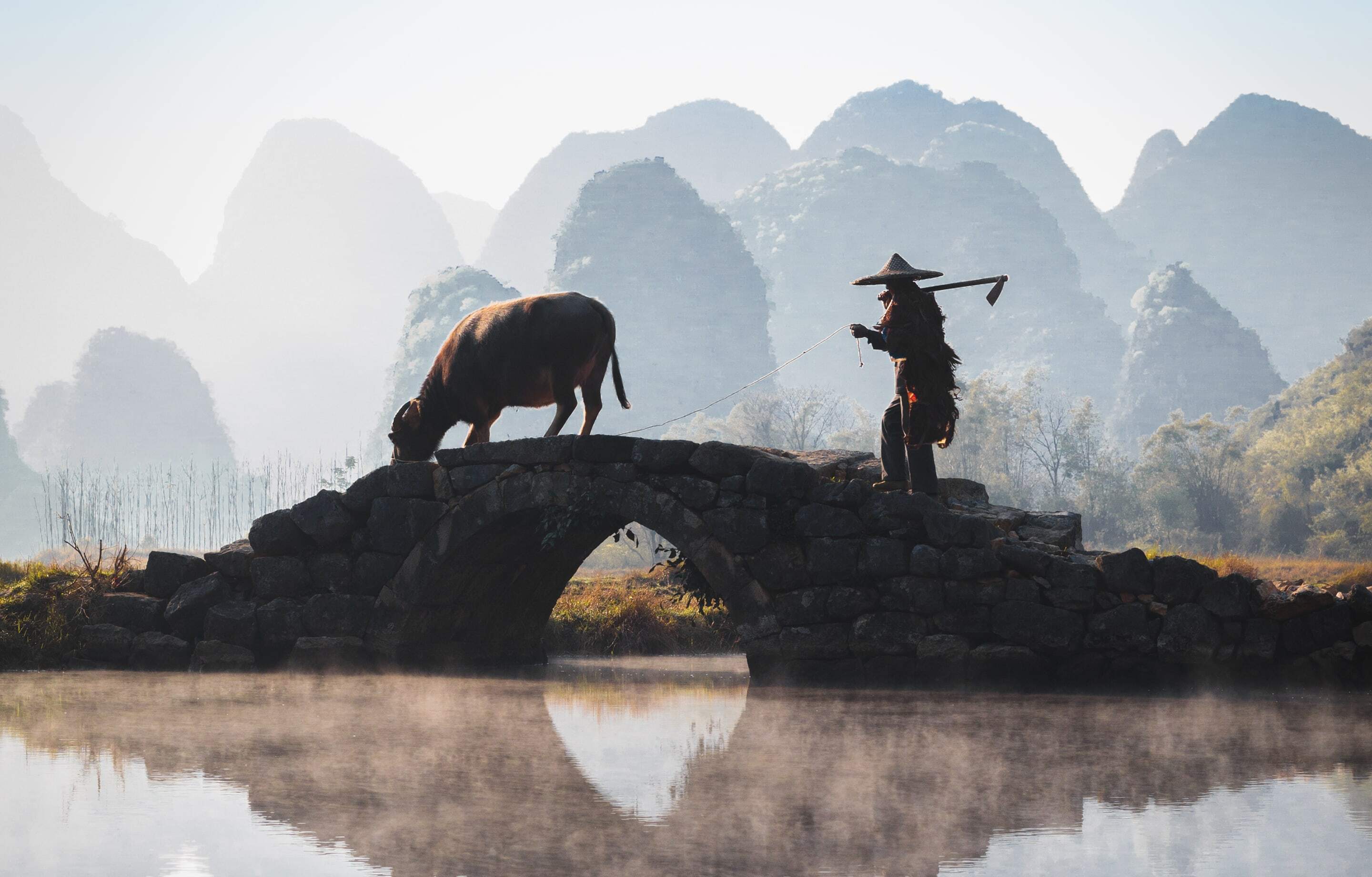
Exclusively Asia
With Remote Lands you'll travel with people who have made Asia the solitary focus of their own lifelong adventure. As our guest, you'll discover Asia on a journey that is completely, authentically your own, adapted from our own remarkable experiences and adventures over the years.
With Remote Lands you'll travel with people who have made Asia the solitary focus of their own lifelong adventure. As our guest, in the continent that our north American founders Catherine and Jay have adored and explored for decades, you'll discover Asia on a journey that is completely, authentically your own, adapted from our own remarkable experiences and adventures over the years.
Travelogues
An Asia-focused magazine brought to you by Remote Lands - a platform for adventure, luxury, and authenticity from experts and explorers around the continent.
Five Things to Know About Watching Baseball in Japan
- Author
- Travelogues
Heal Your Soul: 5 Journeys Through Japan for Your Wellbeing
- Author
- Travelogues
Naohito Ise: Japan National Tourism Organization on Post-Covid Travel
- Author
- Travelogues
What Others Say
Here is a small selection of the kind words our clients have said about us recently.
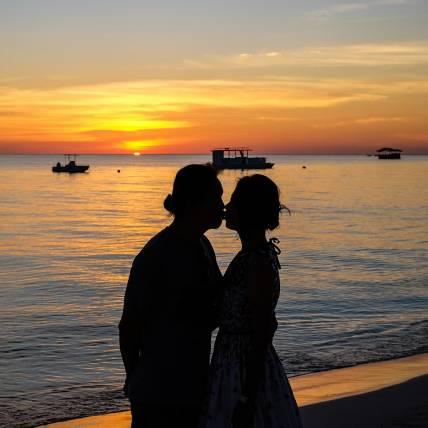
A couple from Guangzhou, China - Aman Jet Expedition 2017
We will still remember every beautiful and remarkable moment you created for us during the trip for years to come.
